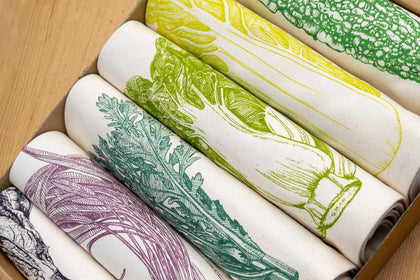
Greek Baked Rice Pudding, with Mastiha Recipe
-
Easy

"Known as rizogalo in Greek, variations of this recipe are found all across the country. The baked version is usually served plain or with a citrusy sweet preserve or marmalade. Apart from the classic vanilla and cinnamon (and sometimes ground nuts), rice pudding is often flavoured with citrus zest, saffron, or mastiha, as in this recipe.
Mastiha, an aromatic resin extracted from the trunks of the mastic trees that grow on the south side of Chios island, has a unique flavour and natural medicinal properties. It is among my favourite Greek products and I use it a lot. Herodotus alludes to the collection and consumption of mastiha widely as a chewing gum (this is where ‘masticate’ derives from). Ancient Greek healers recognized the natural antioxidant, anti-inflammatory and antimicrobial properties and used it to treat patients suffering from stomach and digestive problems, as well as oral infections.
The method of cultivating mastiha on Chios has been preserved and passed down through the generations since ancient times, and in 2014 it was inscribed in UNESCO’s Representative List of the Intangible Cultural Heritage of Humanity. The preparation for the collection of mastiha is called kentos, from kentima, which means embroidery – the specialists artfully ‘embroider’ (score) the trunks and large branches of the trees using a sharp tool and the mastic ‘tears’ drip onto the prepared ground around them. The ‘tears’ crystallize in about 15–20 days, and are then picked from the ground and thoroughly cleaned.
Greek cuisine uses mastiha (or gum matic) in an array of baked goods, ice cream and sweet treats, but also in savoury dishes, such as sauces and stews. It is added to coffee and tea, as well as cocktails, while on Chios it is used to flavour a local version of ouzo. If you can’t find mastiha, replace it with vanilla, although the flavour will be quite different."
Carolina uses glacé rice in this recipe - one of the oldest cultivated varieties of rice. Short-grained and rounded, and high in starch, glacé is ideal in rice puddings and soups. It is quite sticky once cooked and highly absorbent, so it is also often used in pies, either ground or whole, to absorb excess moisture. It can also be substituted with a medium-grain glutinous rice.
Ingredients for Rice Pudding
- 60g glacé rice (medium-grain glutinous rice)
- Pinch of salt
- 780ml whole milk
- 2–3 strips of pared lemon zest (using a swivel peeler)
- 1 cinnamon stick
- ½ tsp powdered mastiha, ground with a pinch of sugar using a pestle and mortar
- 30g cornflour
- 1 large egg yolk, at room temperature
- 60g caster sugar
- Ground pistachios, to serve (optional)
How to make Greek rice pudding
- Rinse the rice, place in a bowl and soak in cold water for 30–60 minutes. Drain and put in a saucepan with 180ml (6fl oz) fresh water and the salt. Place over a medium-high heat and bring just to the boil, then turn the heat down to medium and simmer for about 5 minutes, stirring occasionally, until the rice is partially cooked and there is still some liquid left. Remove from the heat and leave to rest in the remaining liquid.
- In a separate saucepan, add 500ml (17fl oz) of the milk, lemon zest, cinnamon and powdered mastiha. Gently warm over a very low heat for 5–7 minutes, stirring so it doesn’t bubble over, until the milk is flavoured with the spices and lemon.
- Remove from the heat and set aside. Preheat the oven to 220°C/200°C fan/ 425°F/gas mark 7.
- Mix the cornflour with the remaining milk until dissolved. Whisk the egg yolk in a separate, large bowl with the sugar, until creamy. Pour in the milk and cornflour mixture gradually while whisking, until nice and frothy.
- Strain the warm infused milk to remove the aromatics, then slowly pour this into the cornflour mixture, whisking vigorously. Transfer the mixture to the pan with the rice, mix with a wooden spoon and place over a medium-low heat. Cook, stirring constantly to prevent it from sticking, for 8–10 minutes, until it starts to thicken but is still quite loose. Pour the mixture into six ramekins.
- Place the ramekins in a deep baking dish. Pour enough hot water into the baking dish to reach halfway up the sides of the ramekins.
- Place the dish in the centre of the oven and bake for 25–30 minutes or until slightly risen and browned on top. Allow to cool slightly, then sprinkle with ground pistachios, if desired, and serve warm, at room temperature or cold.


